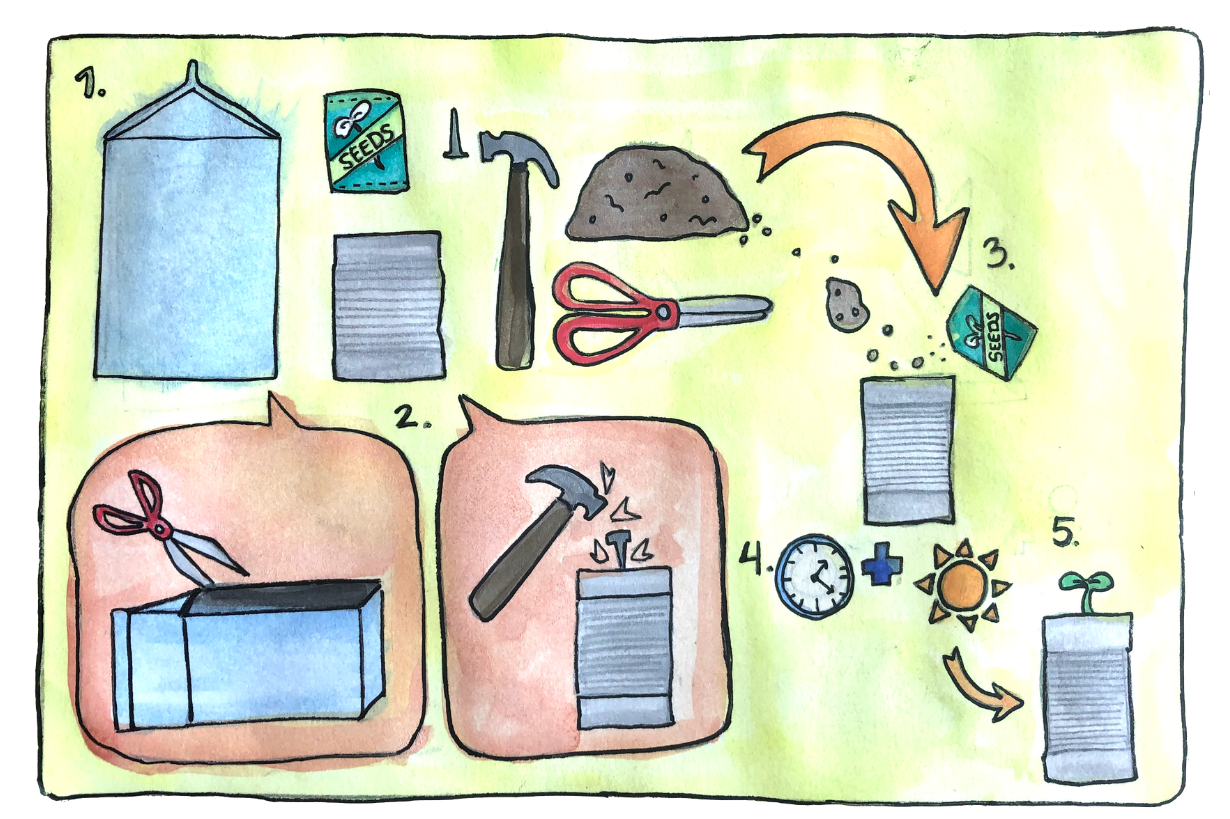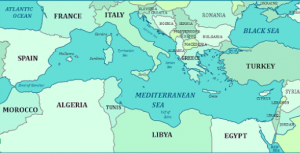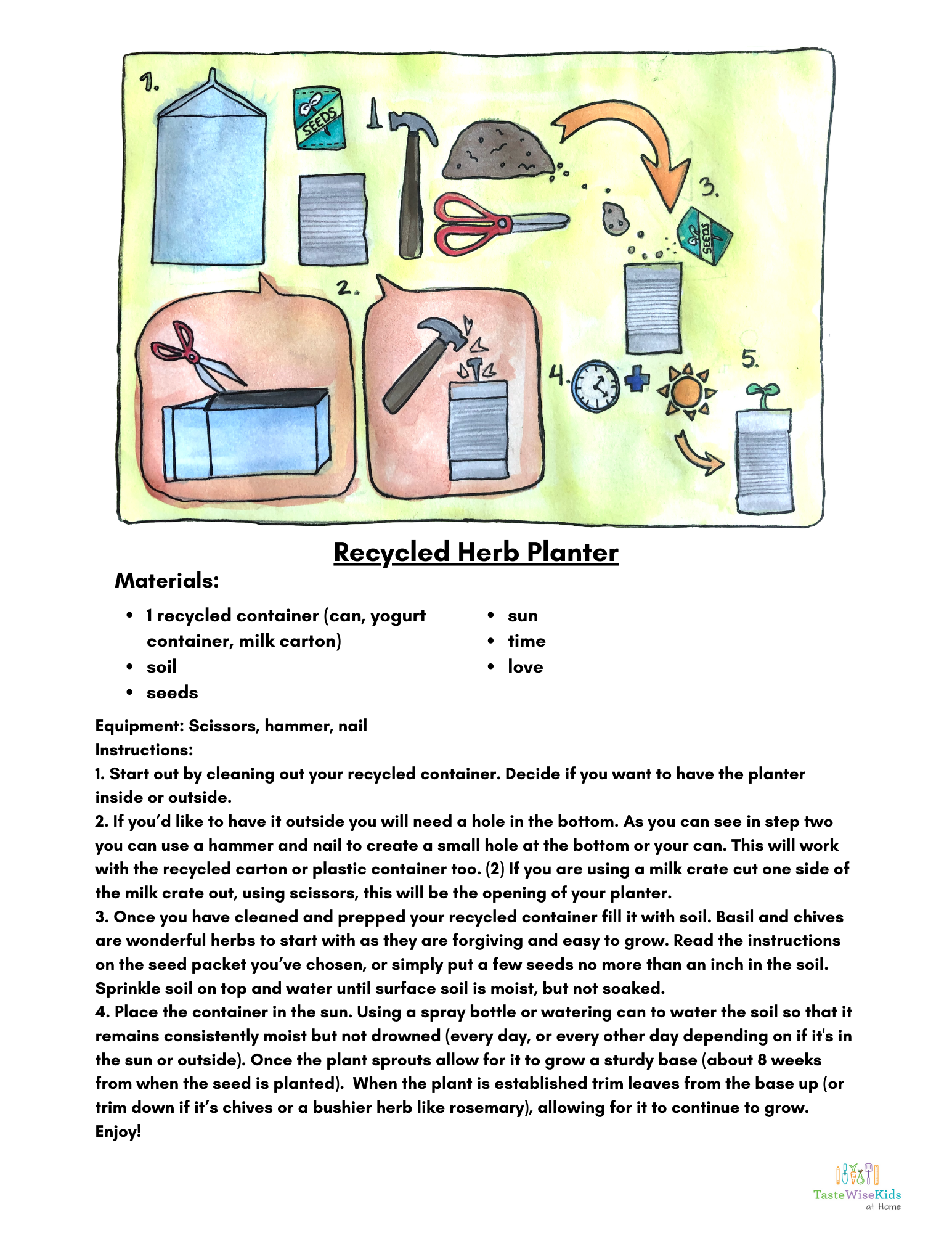#TWKatHome Activities
Careers in Farming
This week’s theme: Careers in Farming
Our first food career, farming! From farmers to food truck owners to recipe developers, Farmer Emma of Yellow House Farm helps explore our own understanding of farming from starting planters at home to discovering where some of our food grows!

Activity: How to start growing herbs in your home!
There are a lot of different ways you can farm and a lot of different types of food you can produce on a farm. First, Farmer Emma shares information about Yellow House Farm, her small organic farm in Baltimore City. Emma started her farm in 2018 and is a part of the Farm Alliance, “an organization of urban farms and neighborhood growers”.
Second, use the printable version of How to Start Growing Herbs in Your Home to build your own recycled herb planter.
Materials for Activity
Download the printable versions of Getting to Know Farmer Emma of Yellow House Farm and How to Start Growing Herbs in Your Home
- One recycled container (can, yogurt container, milk carton)
- Soil
- Seeds
- Scissors
- Hammer
- Nail
- Sun, time and love
Connect with Us
Share a picture of your Recycled Herb Planter on Facebook or Instagram, tag us and use the hashtag #TWKatHome. You never know, we might feature your work in our next blog post or on our Instagram or Facebook!
Instructions
The instructions for this activity are for kids and parents to do together. They are broken down into four steps.
Step 1
Start by cleaning out your recycled container. Decide if you want to have the planter inside or outside.
Step 2
If you'd like to have it outside, you will need a hole in the bottom. You can use a hammer and nail to create a small hole at the bottom of your can. This will work with the recycled carton or plastic container too. (If you are using a milk crate, cut one side of the milk crate out, using scissors,. This will be the opening of your planter.
Step 3
Once you have cleaned and prepped your recycled container, fill it with soil. Basil and chives are wonderful herbs to start since they are forgiving and easy to grow. Read the instructions on the seed packet you've chosen, or simply put a few seeds no more than an inch in the soil. Sprinkle soil on top and water until surface soil is moist,but not soaked.
Step 4
Place the container in the sun. Using a spray bottle or watering can to water the soil so that it remains consistently moist but not drowned (every day, or every other day depending on if it's in the sun or outside.) Once the plant sprouts allow for it to grow a sturdy base (about 8 weeks from when the seed is planted). When the plant is established, trim leaves from the base up (or trim down if it's chives or a bushier herb like rosemary), allowing for it to continue to grow. Enjoy!
Key Activity Points
- Most food starts/grows on a farm even if we don’t see it start there (i.e. we just see it at a grocery store).
- Food can travel long distances to get to us. While we have a lot of great farms in Maryland, much of food still travels from far away.
Keep Learning
Baltimore City Farm Alliance Scavenger Hunt - this activity is for families of upper elementary schoolers on up!
A scavenger hunt is when you search for answers with only a few clues. This hunt shows us how many farms exist in Baltimore City, helping us to understand how farmers can adapt to different spaces in order to grow food. Farms in Howard County, Baltimore County, Harford County, or Baltimore City, Maryland may look very different in size and in how they choose to grow food, but they all have one thing in common, they produce the food we eat!
If Vegetables Could Talk: Fun Facts About Delicious Veggies – Broccoli!
- Broccoli originally grew along the Mediterranian Sea in the 1700’s

- There are two types of broccoli, sprouting and heading. The kind we eat is most likely heading broccoli, which grows in clusters from stalks. Sprouting broccoli grows like cauliflower.
- Broccoli is a form of cabbage. The word broccoli comes from the Italian word “cabbage sprout.”
- Broccoli is a part of the mustard family. It is related to brussel sprouts, kale, cauliflower, kohlrabi, and of course cabbage.
- Broccoli can be eaten raw or cooked. I like it roasted in the oven with salt, pepper, fresh garlic, and lemon juice.


